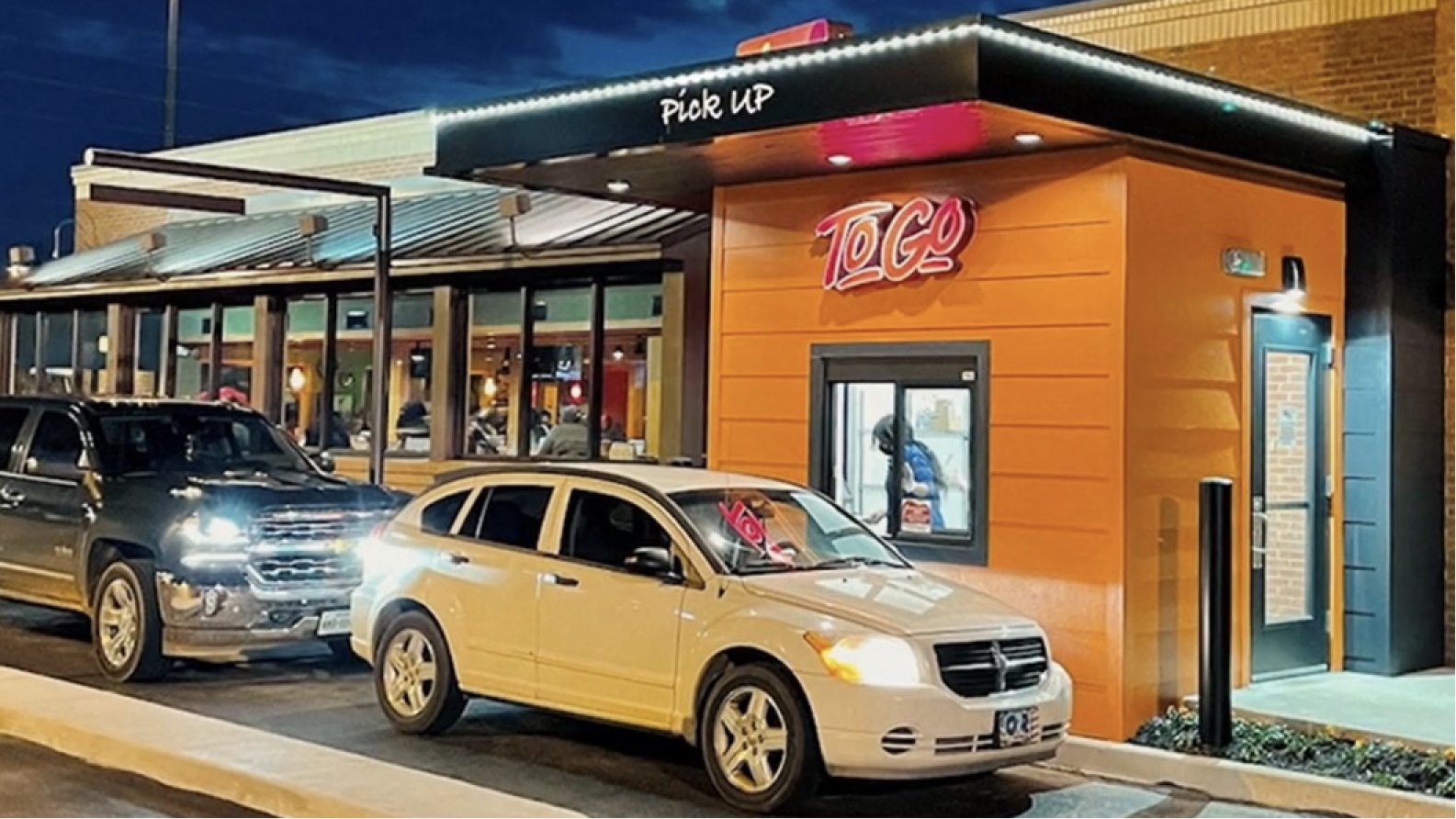6 Game-Changing Retail Technology Trends in 2024

Chief Operations Officer
6 Game-Changing Retail Technology Trends in 2024
Digital Transformation in the Retail Industry
Introduction
The retail industry has already undergone significant transformation in the last decade as prominent retail brands invested heavily in digital transformation underpinned by cloud computing advances and widespread acceptance of e-commerce.
The pandemic in 2020 and the subsequent reopening of the economy have further accelerated changes driven by changing customer expectations and non-traditional demands of Millenials and Gen Z customers. Retailers have no option, but to continue investing in new technologies and stay ahead of the curve.1. Contactless Stores
What are contactless stores
Contactless stores refer to a suite of technologies and customer experiences that retail chains have implemented to minimize friction or delays experienced by customers at various touchpoints and minimize human contact in the entire buying experience.
Technologies and processes that enable a contactless buying experience include e-commerce, buy online and pick up in-store (BOPIS), self-service checkout kiosks, NFC-based payment cards, mobile wallets, and cashier-less checkout experiences such as Amazon’s Just Walk Out.
What are the key drivers for contactless stores?
While e-commerce, BOPIS/Curbside, and contactless buying experiences are not new, COVID-19 accelerated the roll-out of contactless technologies and delivery models as customers and retailers pivoted to overcome social distancing norms and safety concerns.
- According to Visa, tap to pay transactions in everyday segments in the US, including grocery and pharmacy, have grown more than 100% over the last year (2019). 31 million Americans tapped a Visa contactless card or digital wallet in March 2020, up from 25 million in November, with overall contactless usage in the US growing 150% since March 2019.
- According to Square, “Mobile wallets have accelerated in popularity due to the low- or no-touch interactions customers can make in order to complete transactions. And for businesses, the tap-to-pay technology can reduce wait times at checkout.”
- eMarketer estimated that BOPIS sales revenue in the United States grew 107% in 2020 and will continue to grow upwards of 15% till 2024.
Technology implications of implementing contactless stores for retailers
- Depending on the extent and scope of contactless store implementation, retailers may have to review bandwidth availability, LAN/WAN/Wi-Fi capabilities, network security, and security camera coverage at the store.
- Cashierless stores require a bevy of technologies to work together. Computer vision, artificial intelligence-enabled cameras, RFID strips, infrared lead sensors, microphones, and mobile apps work together to offer the convenience of walking in and leaving the store without checking out.
- POS system may need an upgrade to offer additional payment options and integrate POS with sensors. In some implementations (such as Amazon’s Just Walk Out), the concept of POS, as we know it today, may not even exist as a virtual shopping cart is updated in real-time as the customer adds items into the basket.
- Self-checkout, digital wallets, and BOPIS require a recalibrated approach to loss prevention to address theft and online frauds. According to Visa, “Unlike conventional online orders, a BOPIS transaction may contain less information to leverage in assessing the risk of the order (for example, a BOPIS order may not contain a shipping address). Unlike conventional in-store transactions, a BOPIS transaction doesn’t benefit from the secure capture of the payment, like chip-on-chip or tap-to-pay methods.”
- Customer privacy concerns can become an issue when every customer is uniquely identified and tracked throughout the store. While mobile loyalty apps and guest wifi systems are already tracking customer behavior in-store, advanced contactless stores rely on enhanced customer movement tracking which may raise uncomfortable questions regarding customer privacy.
2. Artificial Intelligence (AI) Enabled Security Cameras
What Are AI-Enabled Cameras?
AI cameras use artificial intelligence to make sense of the videos being recorded. They can be programmed to detect certain types of objects or human activity, movement, removal of objects, read license plates or even recognize faces.
AI-enabled security cameras can boost the effectiveness of remote video monitoring or surveillance.
Security operators monitoring the feeds can get real-time alerts when the camera detects any of the anomalies the AI program is trained for thereby allowing security teams to act before a crime is committed.
AI-enabled security camera systems offer a searchable footage library making it easy to quickly find footage of relevance and doing away with the need sift through hours of recorded footage during investigations.
Advanced AI-enabled security cameras have deep learning capability and can become progressively good at recognizing patterns and detecting anomalies in the video being recorded.
Interface’s autonomous Anti-Loitering System includes an intelligent IP camera that uses artificial intelligence to detect people or vehicles and play customizable pre-recorded warning messages.
What Are the Key Drivers for AI-Enabled Cameras?
A recent market study concluded that the global AI camera market was worth $7.4 billion in 2020 and is further projected to reach $33.3 billion by the year 2027, growing at a CAGR of 24.0%.
A combination of factors is driving up demand and use for AI-enabled cameras.
- A study conducted by PwC showed that US companies accelerated investments in AI technologies in the wake of the COVID crisis. According to PwC, “AI leaders are building a virtuous cycle, sometimes called a flywheel: AI leads to better products, increased productivity, and superior customer experiences.”
- AI technology has matured in the last few years to a point where anyone can access AI frameworks and pre-built solution components on popular public clouds like AWS, Azure, and Google Cloud Platform. The ROI of implementing AI-enabled cameras is now compelling resulting in increased adoption.
- The U.S Bureau of Labor Statistics estimates that the labor market for investigation and security services is expected to grow by 6.5%. However, security monitoring service providers are finding it challenging to hire and retain security professionals. AI-enabled cameras can address this issue by delivering increased productivity and improving the quality of monitoring jobs by eliminating monotonous tasks.
- 5G rollout is turning out to be a catalyst for the growth of sensors with edge computing capabilities. Sophisticated cameras with AI capabilities on 5G networks can push more high-quality video streams faster for further processing and analysis resulting in superior monitoring outcomes.
Technology Implications of Implementing AI-Enabled Cameras for Retailers
Enterprises looking to upgrade analog cameras can take one of the below approaches to executing the transition.
- Replace analog cameras with IP cameras (with AI capabilities) along with the cabling. This is a “rip and replace approach” and the investment needed will depend on the number of sites and number of cameras that need to be replaced.
- Replace the cameras without replacing the coaxial cables is an option worth considering if the cable runs are complex. In this case, IP to coaxial cabling adapters can push the videos into a video management system.
- Start with proven AI security solutions before advancing to solving complex problems that might require additional sensors and sensor fusion. AI use cases such as intruder detection during off-business hours, and loitering in the perimeter area is proven and can deliver ROI faster.
- AI security cameras can improve productivity and enhance the effectiveness of the monitoring team and cannot necessarily replace human monitoring. AI solutions do not understand the context of the visuals being recorded and require human review to take vital decisions.
3. Retail Video Analytics
What Is Retail Video Analytics?
Retail video analytics is a relatively new category of retail applications that leverages technologies such as computer vision and AI to capture real-time information from security camera footage.
Most retail chains have installed security cameras at all their stores. These security cameras record vital information that can be used to gain valuable operational insights about retail operations and customer behavior inside the store.
Data that can be captured with video analytics include – customer movement or flow, customer engagement with products and shelves, the effectiveness of the store layout, the impact of online promotions on foot traffic, customer service experience at the checkout, and compliance issues related to product display, spills, and cleanliness.
What Are the Key Drivers for Retail Video Analytics?
There are three primary factors driving the adoption of retail video analytics.
- There was a massive shift in retail consumer behavior due to COVID-19. Retailers that had the capability to predict and react to these changes fared better than those that were too slow to respond. Retail video analytics can help retail chains move beyond descriptive analytics and implement predictive analytics to answer questions in real-time such as “What window display unit maximizes footfall conversion for a specific store format?” or “How many checkout counters should be opened between 5 pm to 7 pm on a Friday for a particular location to minimize checkout times?”
- According to PwC, “Success at the shelf is no longer about the depth and breadth of inventory, but rather creating engaging experiences for customers.” Creating engaging customer experiences calls for real-time access to customer behavior data in the context of the store design or layout, time, and a slew of external contextual factors.
- Profit margins are tight even as retailers retool their operations to cater to changing customer expectations. The only way retailers can find the right business model is to release products in the shortest time possible, gain tactical insights in real-time, and validate the success or failure based on measurable customer actions. Retail video analytics allows retailers to rapidly identify correlations (For example, “what’s the impact of a new layout on sales?”), validate the hypothesis (For example, does a new layout increase sales at all locations or at all store formats?), and consistently implement changes across all locations (For example, are all locations implementing the new layout as per the specifications?”).
Technology Implications of Implementing Video Analytics for Retailers
Implementing a retail video analytics solution is not a complex initiative. However, the real challenge is in identifying the right metrics to track and having the capability to draw meaningful inferences. From a retail IT organization perspective, here are the top considerations when implementing retail video analytics.
- The primary sensor for gathering data from a video is the security camera. Security cameras are installed with loss prevention as the primary use case and the installed cameras may not necessarily meet the data gathering requirements for a video analytics project. Camera upgrades and new installations may become a necessity.
- The ROI of a retail video analytics implementation is directly dependent on the ability to fuse data from multiple data sources to identify correlations and frame hypotheses about customer behavior. Solutions with well-documented API and integration capabilities should be preferred.
- Video analytics solutions can track customer movement, product interactions, and behavior inside the store. When used in conjunction with AI-enabled cameras with facial recognition capabilities, retailers can run the risk of violating customer privacy.
- Retail video analytics can be used by diverse departments or teams in a retail organization. Loss prevention, marketing, operations, human resources, compliance, legal, and merchandising teams have compelling use cases for reviewing customer as well as employee activities within the store. A robust system to regulate access to video analytics data is a critical requirement for IT teams.
4. Metaverse
What Is Metaverse?
According to Merriam-Webster, “In its current meaning, metaverse generally refers to the concept of a highly immersive virtual world where people gather to socialize, play, and work.”
Metaverse is still an emerging concept with bits and pieces of the building blocks being assembled and considered work-in-progress.
The following table breaks down the building blocks that together will eventually make up the metaverse (Source).


The Gucci Gardone on Roblox. Source – Roblox
What Are the Key Drivers for Metaverse Adoption?
A diverse set of factors are forcing retailers to take notice of the metaverse and some retail brands have already invested in creating a presence in the metaverse.
- The shift to work from a home model and travel restrictions on account of the pandemic has also brought about a decisive shift to “shop from home” or “shop from anywhere”. For example, as people are more comfortable shopping for clothes online, apparel stores are losing footfall steadily. With e-commerce registering rapid growth, the metaverse can potentially become a competitive advantage in the future as retail brands are looking to create amazing customer experiences.
- Retail chains are discovering the value of immersive training experiences that metaverse can provide. For example, Walmart rolled out a comprehensive virtual training program for all their US stores using the Oculus VR headsets. Walmart associates are trained on customer service, store operations, security threats, and BOPIS management through immersive, real-world experiences. Walmart claims immersive training has reduced training duration, improved knowledge retention, and enabled consistent implementation of customer service best practices.
- Luxury retail brands such as Louis Vuitton are betting on getting a headstart with metaverse for brand building. In 2021, Louis Vuitton launched Louis The Game, a mobile game with 30 embedded NFTs (non-fungible tokens) that can be found only by playing the game. Balenciaga has launched a division in the company that’s focused on building a presence in the metaverse. Gucci’s Garden Experience on Roblox offers people the opportunity to experience themed rooms to experience the virtual gardens, share their experiences with others and win virtuals prizes. Through metaverse, luxury brands want to get in front of young audiences who may otherwise not otherwise interact with their brands.
Technology Implications of Implementing Metaverse Presence for Retailers
The metaverse is a nascent concept and making any investments in the metaverse has to be carefully calibrated with a clear focus on outcomes. Here are some of the considerations for retail CIOs and management teams looking to join the metaverse bandwagon.
- Investing in the metaverse is likely to be a risky venture in terms of meeting business objectives. The metaverse as we have it today falls well short of the seamless interoperability that it aims to provide in the future. Any investments made now on a vendor platform may become irrelevant in the future as industry standards and solution frameworks are still evolving.
- According to Gartner, the current maturity of metaverse solutions is collectively called the “Emerging Metaverse”. The emerging metaverse is likely to morph into an “Advanced Metaverse” by 2025 and later into a “Mature Metaverse” by 2028. With time, the technology risks are likely to come down and the ROI of metaverse initiatives will be much clearer for retailers.
- Metaverse initiatives are spawning legal challenges and roadblocks for retail brands. StockX, a reseller for sneakers and other items, launched Nike shoes NFTs that can be purchased and traded online. Nike filed a trademark infringement suit. This is an example of some of the potential roadblocks retailers may face when creating a presence in the metaverse.
- While there are risks in investing scarce Dollars in a metaverse initiative, being left behind is also not an option for retailers. A better strategy would be to make small bets on a wide variety of metaverse platforms to see what’s working and what’s not.
- Creating a presence on metaverse will require new IT skills either in-house or with the vendors closely aligned to the IT organization. When Home Depot implemented blockchain technology to track vendor supply chain and invoicing issues, they relied on IBM to support the implementation. Another scenario would be when retailers decide to accept cryptocurrency, They need to evaluate not only the technical challenges of integrating a crypto payment gateway but also figure out the most suitable cryptocurrency exchange to encash the payments.
5. Retail Demand Planning
What Is Retail Demand Planning?
Retail demand planning is the process of forecasting demand for products across all channels (in-store, e-commerce, BOPIS, ship from store) taking into consideration historical demand patterns, business decisions and external factors such as competitor offers.
Demand planning helps retailers navigate complex challenges across all aspects of retail operations.
- Streamlined store and distribution center replenishment
- Better workforce planning and optimization
- Optimized product promotions and discounts
- Optimized assortment planning
- Better space planning and optimization
- Improved budgeting and cash flow management
What Are the Key Drivers for Retail Demand Planning?
The pandemic forced retail chains to go through years of growth in just a few months! e-Commerce and new fulfillment channels are no longer seen as a differentiator as customers expect to find the products they want no matter where and how they shop.
The only way retailers can meet these expectations is by upgrading to a data-driven, real-time demand planning approach. Retailers are already upgrading their demand planning capabilities to process more data or variables in the planning process at scale while relying on human planners for qualitative input and exception management.
Here are some of the key drivers driving demand planning innovation in the retail industry.
- Trust depends on retailers’ ability to deliver value and excellence in managing the inventory. Having the right product and getting it to their hands in their preferred channel is a great strategy to rebuild trust, According to Walter Robb, Former Co-CEO of Whole Foods, “Some customers say they want to be served in certain ways, such as grocery customers saying they want to pick up items in-store or have certain things delivered. It’s up to brands to develop the capabilities to serve customers how and when they want to be served. Brands earn trust when they listen to customers and are willing to meet their needs.”
- Fulfillment complexity is increasing with new channels graduating from a fad to becoming mainstream. In addition to e-Commerce and BOPIS, grocery retailers will soon have one more fulfillment center, i.e the customer’s home. According to Gartner, by 2025, ‘at-home replenishment as a service’ will surge to 5% of multi-channel grocery retailers’ total revenues. Amazon and Walmart are already piloting smart refrigerators and coolers that can be automatically tracked and restocked.
- Customer consumption patterns are also evolving and the pandemic created distinct consumption patterns that impacted demand planning for retailers. McKinsey identified four distinct consumption patterns during and after the COVID-19 pandemic:
- Pantry load and consume (consumption expands). Example: Cleaning supplies, vitamins, and supplements. Consumption increased during the pandemic and continues to hold ground even after the pandemic.
- Pantry load and preserve (consumption does not change). Example: Pet food and toilet paper. Consumption did not actually increase during the crisis, resulting in post-crisis volume declines.
- Now at home (consumption shifts). Work-from-home and shelter-in-place policies force consumers to shift on-the-go occasions for products such as coffee and alcohol from in-person food-service outlets to online retailers.
- Not now (consumption declines). Declining consumer confidence and a focus on essential categories lead to a decrease in purchasing certain goods during the crisis—for example, beauty, food, and beverages for immediate use. Purchasing levels for these categories are returning to normal after the crisis.
- While most retailers have a lot of valuable data, many of them still lag behind in their ability to extract meaningful business insights from the data on time. Considering the retail market is going through a dynamic growth phase driven by changing customer preferences, there is a need for innovative approaches to demand planning. According to Relex, a retail demand planning platform, retailers can bridge the data utilization gap by combining artificial intelligence and machine learning with statistical modeling and optimization, simulation, classification, as well as rules, and heuristics.
- Better demand planning requires an ability to crunch data at scale. Advances in in-memory computing, hybrid analytical/transactional data processing, and cloud computing infrastructure that can scale processing on-demand have allowed demand planning vendors to deliver innovative products for realistic scenario simulations.
- Reducing food waste is becoming a key challenge for grocery retailers. Increasingly socially conscious customers are looking to spend their money with retailers aligned with similar values. California’s SB1383 legislation mandates grocery retailers to follow specific guidelines to dispose of unsold produce. The goal of this legislation is to minimize produce being dumped in landfills (which contributes to pollution) and instead divert the produce to non-profit organizations. Retailers failing to meet the norms are liable to pay penalties.
Technology Implications of Implementing Retail Demand Planning
The following are some of the factors CIOs and IT organizations should consider when choosing to implement sophisticated demand planning applications.
- Among the several critical features required in a retail demand planning platform, Forrester has identified segmenting and clustering, demand management, inventory planning and operational effectiveness, and agile merchandising as core features to be evaluated when choosing a retail demand planning application.
- Any plans for a unified demand planning software implementation should take into consideration organizational bottlenecks. If the retailer has planning teams working in silos with each team responsible for specific channels, implementing a demand planning solution that requires closer collaboration and joint decision-making on a daily basis will cause friction and turf wars. Implementing a demand planning software will involve some level of organizational restructuring to leverage all the benefits associated with a collaborative approach to demand forecasting cutting across channels.
- Considering the intensive compute requirements for running machine learning and AI algorithms to create demand forecasts, retailers need to budget for cloud computing cost escalations along with fund allocations for backup and disaster recovery.
- Any retail demand planning implementation should take into consideration robust data-sharing protocols with suppliers. The applications should have the ability to automatically share demand data at the right level of granularity that the suppliers can then use to plan their deliveries and manufacturing. A feedback loop may also be needed from the supplier end to plan for any variation between demand and supply.
- Data quality and data governance are critical to the successful implementation of any demand planning software. Retail chains that have grown through acquisitions and saddled with diverse systems with inefficient data collection or data centralization processes can find it challenging to implement a unified demand planning solution. A focused approach to solving data collection and data quality issues should be in every retail CIO’s roadmap.
The pandemic forced retail chains to go through years of growth in just a few months! e-Commerce and new fulfillment channels are no longer seen as a differentiator as customers expect to find the products they want no matter where and how they shop.
6. Generative AI
What Is Generative AI?
Generative AI creates new content, such as images, videos, music, text, or other forms of data. Unlike traditional AI models used by retailers that are primarily focused on classification or prediction tasks based on large data sets, generative AI models are designed to produce original and creative outputs.
Retail chains can leverage generative AI in various ways to enhance their operations, customer experiences, and decision-making processes. Here are a few examples of how generative AI can be used in the retail industry:
- Generative AI models can be employed to create realistic product images or videos for e-commerce and catalogs even for items not yet photographed. This accelerates product development and testing without having to invest in manufacturing expensive samples that will never be sold. Merchandising teams can accelerate the process for new product development and display formats.
- Generative AI can power virtual try-on applications, enabling customers to virtually “try on” clothing, accessories, eyewear, or cosmetics. By using computer vision and generative models, retailers can overlay virtual representations of products onto real-time video or images of customers, allowing them to see how items would look on them before making a purchase decision.
- Retail chains can create virtual assistants and chatbots that can interact with customers, answer inquiries, provide product recommendations, and assist with the purchasing process using natural language responses, making customer interactions more conversational and personalized.
According to McKinsey, In the next three to five years, generative AI could add $150 billion, conservatively, and up to $275 billion to the apparel, fashion, and luxury sectors’ operating profits.
What Are the Key Drivers for Generative AI
Generative AI has rocketed to prominence on the back of several enabling factors that allow this advanced technology to find its way out of research to the mainstream. Here are some of these factors propelling the growing adoption of Generative AI.
- Retailers have been grappling with labor shortages. In 2022, we saw the “great resignation” wave and the industry hasn’t recovered from the trend yet. According to the US Chamber of Commerce, the quit rate for the retail trade industry is hovering around 3.3 percent so far in 2023 against a falling national average of 2.6 percent. Generative AI offers a credible solution as retailers find ways to mitigate labor shortages and improve employee productivity.
- The cost of AI model training has been coming down making AI accessible to enterprises and startups. According to a report from ARK Investment Management, “AI training cost declines continued at an annual rate of 70%, the cost to train a large language model to GPT-3 level performance collapsing from $4.6 million in 2020 to $450,000 in 2022. We expect cost declines to continue at a 70% rate through 2030.”
- Microsoft invested over $10 billion in OpenAI in January 2023 as the company laid out a plan to integrate OpenAI’s ChatGPT with Azure to enable customers to build enterprise-grade AI applications. The speed with which ChatGPT has found traction among consumers has also created a credible proof-point for retailers to embrace Generative AI.
- CIOs are already investing in building AI applications. According to this report from Databricks, 60% of CIOs surveyed planned to deploy AI-based solutions across all departments by 2025.
Technology Implications of Implementing Generative AI Applications for Retailers
According to the World Economic Forum, “Many organizations are underprepared for AI, lacking the proper oversight and expertise from key decision-makers to manage risk.” The truly transformational nature of Generative AI comes with the risks associated with venturing into a relatively new territory for retailers. Here are some of the technology implications for retailers planning on implementing Generative AI applications:
- Generative AI models often require large amounts of data for training. Retail chains need to ensure they have the necessary data infrastructure to collect, store, and process the data efficiently. This may involve implementing data management systems, data pipelines, and scalable storage solutions.
- Training and running generative AI models can be computationally intensive. Retail chains may need to invest in powerful hardware or leverage cloud computing services to handle the computational requirements. According to Tirias Research, Generative AI’s data center costs are projected to surpass $76 billion by 2028, potentially impacting the profitability of services like search, content creation, and business automation.
- Developing and training generative AI models requires expertise in machine learning and deep learning techniques. Retail chains may need to hire or collaborate with data scientists and AI specialists to build and fine-tune these models. They also need to allocate time and resources for model training and experimentation.
- Generative AI solutions need to be integrated with existing retail systems and workflows. This may involve connecting with inventory management systems, point-of-sale systems, customer databases, and other relevant systems. Integration may require developing APIs or middleware to facilitate data exchange and communication.
- Generative AI can raise ethical concerns, such as the potential for bias or misuse of generated content. Retail chains need to be aware of these considerations and establish guidelines and frameworks to ensure fairness, transparency, and responsible use of the technology.
- Once the generative AI solution is deployed, it requires ongoing monitoring and maintenance. This includes monitoring the model’s performance, addressing any issues or errors, retraining the model periodically to improve its output quality, and staying up to date with the latest advancements in generative AI research.
Share this article
Transform retail operations with Interface
About the author

Bud Homeyer
Chief Operations Officer
Explore more blog articles

Business Video Surveillance Insights for Loss Prevention Teams

7 Groundbreaking Drive-Thru Concepts and Trends for QSRs in 2024

Retail Network Transformational Insights
Connect with Our Experts
Interface solution experts are ready to help you solve challenges. Set up a no-obligation, exploratory call now.